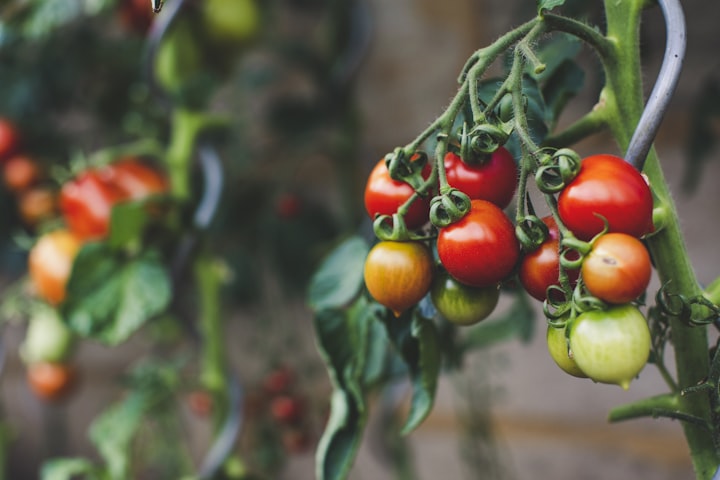Colorfully Delicious: How To Eat The Rainbow For Life
Foods That Feed Your Body & Senses

It's summer, and everyone is out and about enjoying the warmth and excitement that summer brings.
Brightly colored clothes has taken the place of the drab earth tones associated with colder weather. It's time to bring out the bright yellows, reds, blues, and other beautiful hues that make the season so enjoyable.
Yes, vividly colored hats, tops, and shoes, as well as brightly colored refreshing drinks, complete the summer style!
Quick question: Are your meals similarly vibrantly colored? If not, take a look at these suggestions I have for you!

A colorful plate is necessary for a balanced diet because it contains foods from all the dietary groups. You need to include colorful fruits and vegetables in your diet in addition to meat and potatoes to acquire the important vitamins and minerals you want to maintain your greatest level of health.
Here are several hues you might want to notice the next time you glance down at your plate if you desire a healthy, balanced diet:
Green
Foods that are green in hue, such as peas, kale, spinach, honeydew melons, kiwifruit, dark leafy lettuces, and leafy greens, include lutein, which helps preserve excellent vision and may help lower the incidence of macular degeneration and cataracts.
The following vegetables fall under the category of greens: broccoli, cabbage, bok choy, swiss chard, brussels sprouts, rutabaga, turnips, cauliflower, and watercress. These foods contain indoles, which may aid in lowering cancer risks and slowed tumor growth in cancer patients.
Yellow
Foods having a yellow or orange color are rich in bioflavonoids, which can lower the risk of cancer and heart attacks when combined with vitamin C. They also provide potent antioxidants that support strong bones, healthy skin, and clear vision. Oranges, tangerines, pears, lemons, nectarines, grapefruit, peaches, apricots, pineapple, pineapple, yellow raisins, and yellow peppers are among the foods in this category.
Blue and Purple
Anthocyanins, which are found in foods like blueberries, purple grapes, blackberries, black currents, and elderberries, can lower the risk of heart attack, cancer, diabetic complications, Alzheimer's disease, and aging-related memory loss. Foods that are dark purple include phenolics, potent antioxidants that can delay the effects of aging.
Orange
Beta-carotene, a potent antioxidant found in foods with dark orange hues like pumpkin, sweet potatoes, apricots, peaches, carrots, cantaloupes, mangoes, and butternut squash, can support a healthy immune system, preserve strong vision, and even help prevent cancer and heart attacks.
Red
Red foods include tomatoes, guava, watermelon, and pink grapefruit. These foods contain lycopene, which has received a lot of recent attention for its potential role in prostate cancer prevention. These meals can also help lower the risk of heart attack and skin, breast, and other types of cancer.
Anthocyanins, potent antioxidants that can lower the risks of cancer, heart attack, Alzheimer's disease, and diabetes complications, are found in red onions, cherries, kidney beans, raspberries, strawberries, cranberries, beets, red apples (with the skin), and red cabbage.

Aim to include 5 servings of fruits and vegetables each day since this is one method to ensure that your plate is always colorful. You might be amazed at how much your health improves if you try to include food from each of these color groups at least once per day.
I've said it before and I'll say it again: Eating a vibrant array of fruits and vegetables not only adds a burst of color to your plate, but also delivers an array of health benefits. The rainbow hues in these foods indicate the presence of various beneficial nutrients.
Remember that fruits and vegetables with different colors include a variety of vitamins, minerals, antioxidants, and phytochemicals.
So, the next time you're planning your meals, keep a rainbow of foods on your plate in mind - after all, it's a simple method to ensure you're fuelling your body with a variety of nutritious ingredients.
We can enjoy the nutritious benefits of colorful produce while also savoring delicious flavors that make healthy eating more enjoyable.
By incorporating a diverse range of colorful produce into our meals, we can make our dining experience both fun and healthy!






Comments
There are no comments for this story
Be the first to respond and start the conversation.